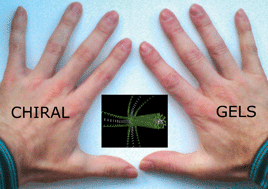Lost in translation? Chirality effects in the self-assembly of nanostructured gel-phase materials†
Abstract
Gel-phase materials are generated when molecular building blocks assemble into nanoscale architectures, usually ‘one-dimensional’ fibrils, which hierarchically assemble into bundles and subsequently form an entangled sample spanning network, capable of preventing the flow of bulk

- This article is part of the themed collection: Nanoscale Chirality

 Please wait while we load your content...
Please wait while we load your content...